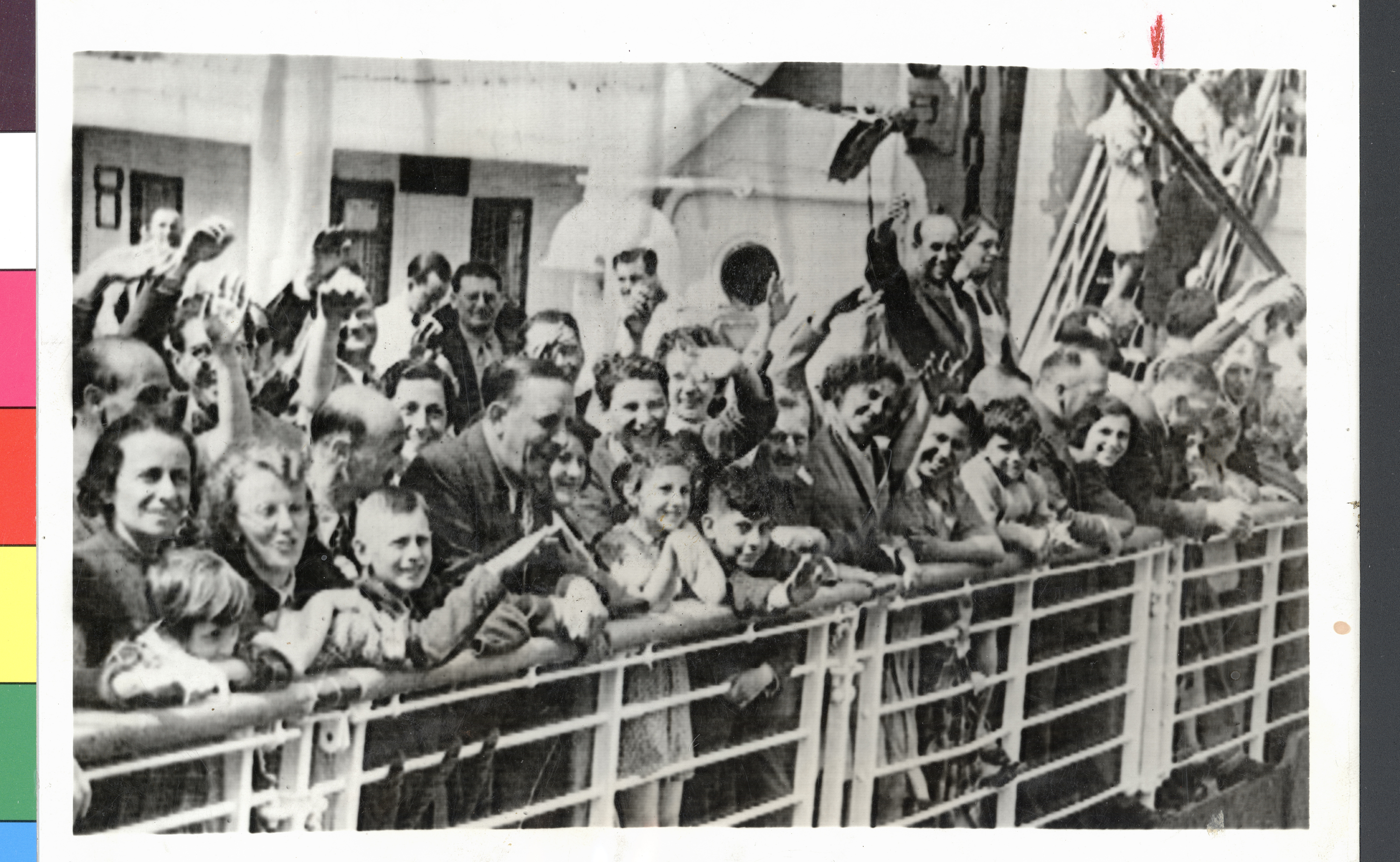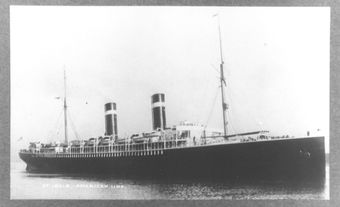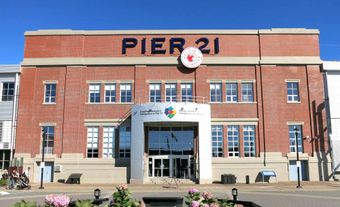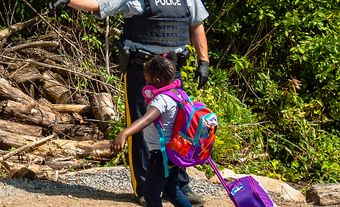Canadian Refugee policy refers to the way the Canadian government seeks to manage groups of asylum seekers looking for refuge in Canada. Refugee policy is shaped by domestic laws and regulations as well as international treaties. Refugee migration is often very political and influenced by public opinion.

Key Concepts about Migration and Refugees
Migrant — Migrants are broadly defined as foreign-born or foreign nationals currently in a country other than their country of origin. Migrants can also be simply defined as people who move from one place to another, including across international borders.
Asylum seeker — Asylum seekers are migrants in search of protection outside of their countries of origin. However, unlike refugees, asylum seekers’ requests for protection have yet to be approved.
Refugee — The United Nations High Commission on Refugees (UNHCR) defines refugees as those who have fled from conflict and persecution to seek protection in another country. As such, refugees are generally asylum seekers who have been granted the right to asylum in another country (refugee status).
The 1951 Convention on the Status of Refugees defines refugees as: “someone who is unable or unwilling to return to their country of origin owing to a well-founded fear of being persecuted for reasons of race, religion, nationality, membership of a particular social group, or political opinion.”
Canada's Modern Refugee and Asylum System
In Canada, people can gain refugee status and subsequent permanent residence in two ways. First, they can come to Canada on their own to seek asylum and must proceed through Canada's refugee determination system. They are referred to as "asylum seekers"or "refugee claimants" until they successfully prove before the Immigration and Refugee Board (IRB) that they should be granted refugee status and permanent residence in Canada.
Second, people can be resettled to Canada with the assistance of the United Nations High Commissioner for Refugees (UNHCR), the United Nations body in charge of forced migration responses and refugee resettlement. Refugees can either be resettled by the Canadian government, or else they can be privately sponsored by organizations or individuals. They are permanent residents upon arrival in Canada.
Canadian Refugee Policy, 1867–1945
Historically, Canada’s treatment of refugees was characterized by significant discrimination on the basis of race and ethnicity to discourage certain groups of migrants. These racist measures included, for instance, the Chinese Head Tax and the Chinese Immigration Act. Canada’s exclusionary approach to refugee policy is perhaps best represented by the government’s refusal to take in Jewish refugees fleeing from Nazi persecution in the 1930s. This was notably the case with the passengers onboard the MS St. Louis. Canada would end up taking in one of the smallest numbers of Jewish refugees.

Not only was refugee admission largely political and arbitrary, Canada also did not have a cohesive and consistent refugee policy in the modern sense. Most decisions were political and made on a case to case basis.
Canadian Refugee Policy, 1945–1990s
The disruptions brought about by the Second World War displaced many people and led to the largest refugee migration in European history. Canadian refugee policy changed to welcome these postwar refugees. Not least because the Canadian economy was now booming and there was a need for more workers. The Canadian government would subsidize hundreds of thousands of migrants’ journeys to Canada.
In 1951, the UN Convention Relating to the Status of Refugees set the international norms for protecting refugees. Central to this document was the principle of “non-refoulement.” This principle prevents countries from sending back refugees (often, against their will) to areas which could be dangerous or might limit their freedom. Canada signed the Convention and its 1967 Protocol in 1969.
In 1962, a Canadian government order officially abolished racial discrimination in the selection of immigrants (see Immigration Policy) and Canada adopted an official multicultural policy in 1971. In April 1978, the new Immigration Act came into effect and recognized refugees as an official category of immigrants. The Immigration Act also adopted the comprehensive definition set out in the 1951 UN Convention and its 1967 Protocol. The 1976 Immigration Act was replaced by the Immigration and Refugee Protection Act in 2002.

Throughout the Cold War, Canada would welcome multiple refugee cohorts from across the world. Refugee resettlement became a hallmark of Canadian migration history. In 1986, in recognition of its exceptional contribution to refugee protection, Canada was awarded the Nansen Medal by the United Nations High Commissioner for Refugees (UNHCR).
Canadian Refugee Policy, 1990s–2015
From the 1990s–early 2010s, Canada enacted a number of policies aimed at curtailing the number of refugees. In the aftermath of 9/11 and the increased focus on national security, more resources were diverted to strengthen border enforcement. There was also a general attempt at decreasing numbers of refugees and asylum seekers. As a result, refugees were often wrongfully depicted as being linked to criminality and terrorism.
In 2004, Canada and the United States signed the Canada-United States Safe Third Country Agreement. The agreement recognized both countries as being “safe third countries” for asylum seekers. As such, it was possible for both countries to prevent asylum seekers from coming in from the other country to apply for refugee status.
Under the Conservative government of Stephen Harper, the rhetoric against refugee claimants was intensified. Many groups of asylum seekers were accused of being “bogus refugees” and fraudulent. The government viewed many refugees as individuals trying to take advantage of Canada’s immigration system. This attitude characterized the government’s approach to the Sri Lankan Tamil asylum seekers on the MV Ocean Lady and MV Sun Sea in 2009-2010. The Tamil migrants were imprisoned and accused of being part of a human smuggling operation despite many later being granted refugee status by Canada’s refugee system.
In 2012, the Canadian government passed Bill C-31, or the Protecting Canada’s Immigration System Act. The Bill drastically restructured Canada's refugee and immigration policies. Bill C-31 introduced a number of restrictive changes to refugee admission policy. The policy was widely protested by lawyers, doctors and refugee advocates in Canada. Moreover, Bill C-31 made it easier to exclude political prisoners and activists from the refugee definition. The Bill also put in place mandatory detention provisions for certain groups of refugee claimants. It also incorrectly linked refugees fleeing persecution to human smuggling offences. This is in spite of international refugee law that understands that refugees often have to use smugglers to escape danger and reach asylum.
Bill C-31 created a list of designated countries of origin, or "safe countries," which denied appeal procedures and significantly shortened timelines. These countries were determined to "not likely produce refugees". However, this approach did not take into consideration individuals’ different experiences based on gender, ethnicity or sexual orientation in any particular country. The safe country provision was successfully challenged at the Federal Court in 2015, when the lack of appeal procedures for refugee claimants coming from these countries was deemed unconstitutional.
Healthcare for refugees was drastically cut under the Conservative government. This policy was also successfully challenged at the Federal Court in 2015 Justice Anne Mactavish would describe these cuts as being "cruel and unusual treatment." In February 2016, the Liberal government reversed the cuts and fully reinstated healthcare for all refugees.
Recent Changes to Canada's Refugee Responses
Canada's response to the conflict in Syria highlights how a change in government can have profound effects on refugee policies domestically and internationally.
By 2015, a large number of Syrians had been displaced by the civil war in their country. As the scale of the refugee crisis increased and shocking pictures of Alan Kurdi’s — a three years old Syrian migrant — dead body washed up on a beach were published, Canadian public opinion shifted. More action was demanded in favour of helping Syrian refugees. However, the Conservative government only committed to resettling a small number of Syrians over the course of multiple years. In contrast, the Liberal party led by Justin Trudeau committed to resettling 25,000 by the end of the year. The issue was ultimately decided by a federal election in Fall 2015 which resulted in a Liberal victory. While the original goal set by the Liberals was too ambitious, Canada did resettle around 54,000 Syrian refugees by 2017. (See also Canadian Response to the Syrian Refugee Crisis.)
New governments, powerful pictures and shifting popular opinions reveal the speed with which policy responses towards refugees change. Forced migration is a highly complex phenomenon, and migration policies often blend together international and domestic politics.
Ongoing Challenges
In 2018, Canada resettled more refugees than any other country. According to the annual global trends report released by the UNHCR, Canada took in 28,100 of the 92,400 refugees who were resettled across 25 countries. The report also shows that over 18,000 refugees became Canadian citizens that year, making it the country with the second highest rate of refugees to gain citizenship.
While Canada resettles more refugees than most other countries, it is not the country which receives the most refugees. Most refugees are typically asylum seekers who flee to neighbouring countries for protection as opposed to being resettled. Due to Canada’s isolated geographic position, the country only receives a small number of asylum seekers compared to other countries. These other countries tend to get a much larger number of refugees at their borders whereas Canada gets to choose the number of resettled refugees it welcomes.
There has, however, been an increase in the number of asylum seekers presenting themselves to the Canadian border. This was notably the case during the years of the Donald Trump administration in the United States. That administration’s hostility towards irregular migration pushed many asylum seekers to seek refuge in Canada. However, due to the Canada-United States Safe Third Country Agreement (STCA), these migrants’ refugee claims would be denied if they tried to enter via an official point of entry. To bypass this issue, asylum seekers performed irregular border crossings into Canada. The government reacted to this increase in irregular migration by setting up checkpoints at these unofficial border crossings to intercept and process irregular migrants’ claims. However, once in Canada, these asylum seekers could apply for refugee status and were protected by the Canadian Charter of Rights and Freedoms.
In late March 2023, the Canadian and US governments announced important changes to the STCA. The treaty now applies to the entire land border, including irregular border crossings like Roxham Road. The change means that many asylum seekers who cross the border irregularly will be returned to the US. Certain groups are exempted, these include unaccompanied minors, migrants with family in Canada and asylum seekers at risk of getting the death penalty.

 Share on Facebook
Share on Facebook Share on X
Share on X Share by Email
Share by Email Share on Google Classroom
Share on Google Classroom



